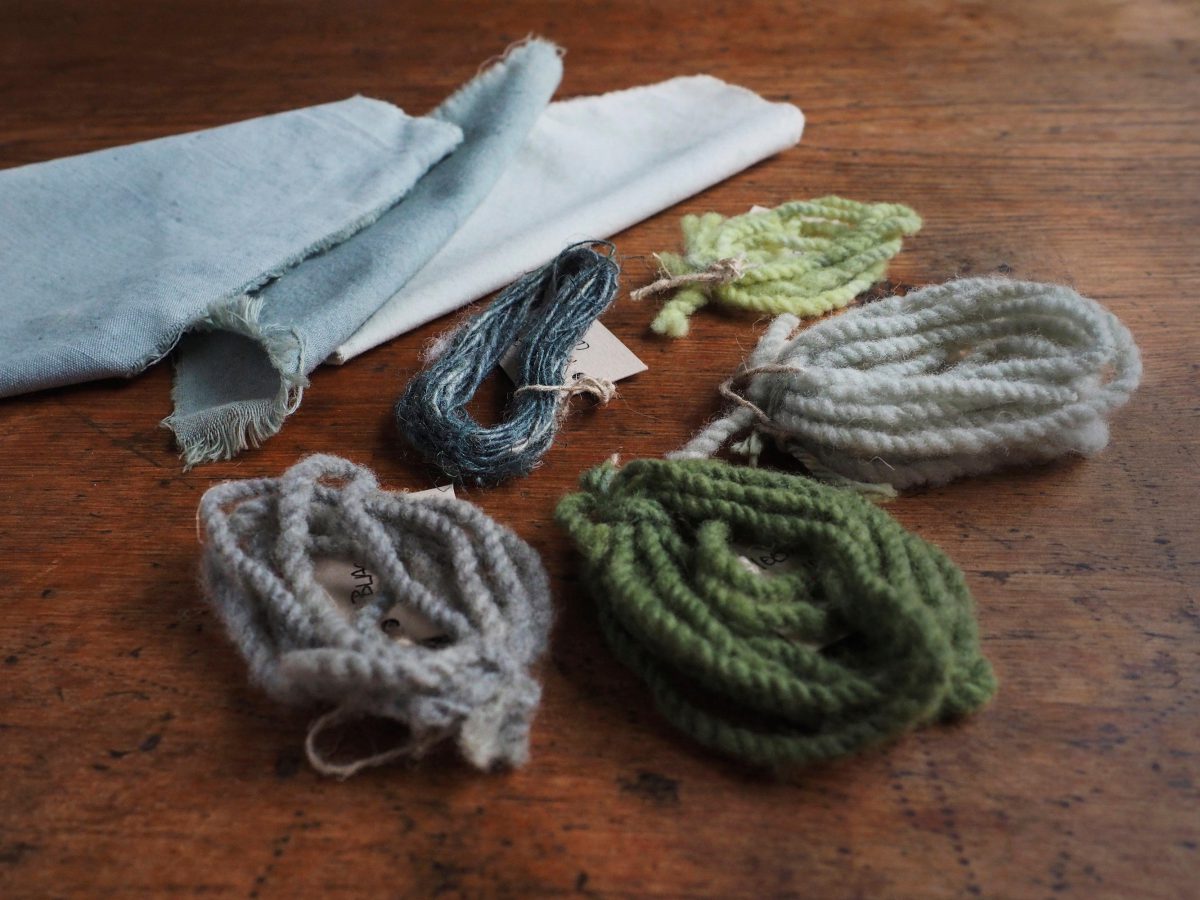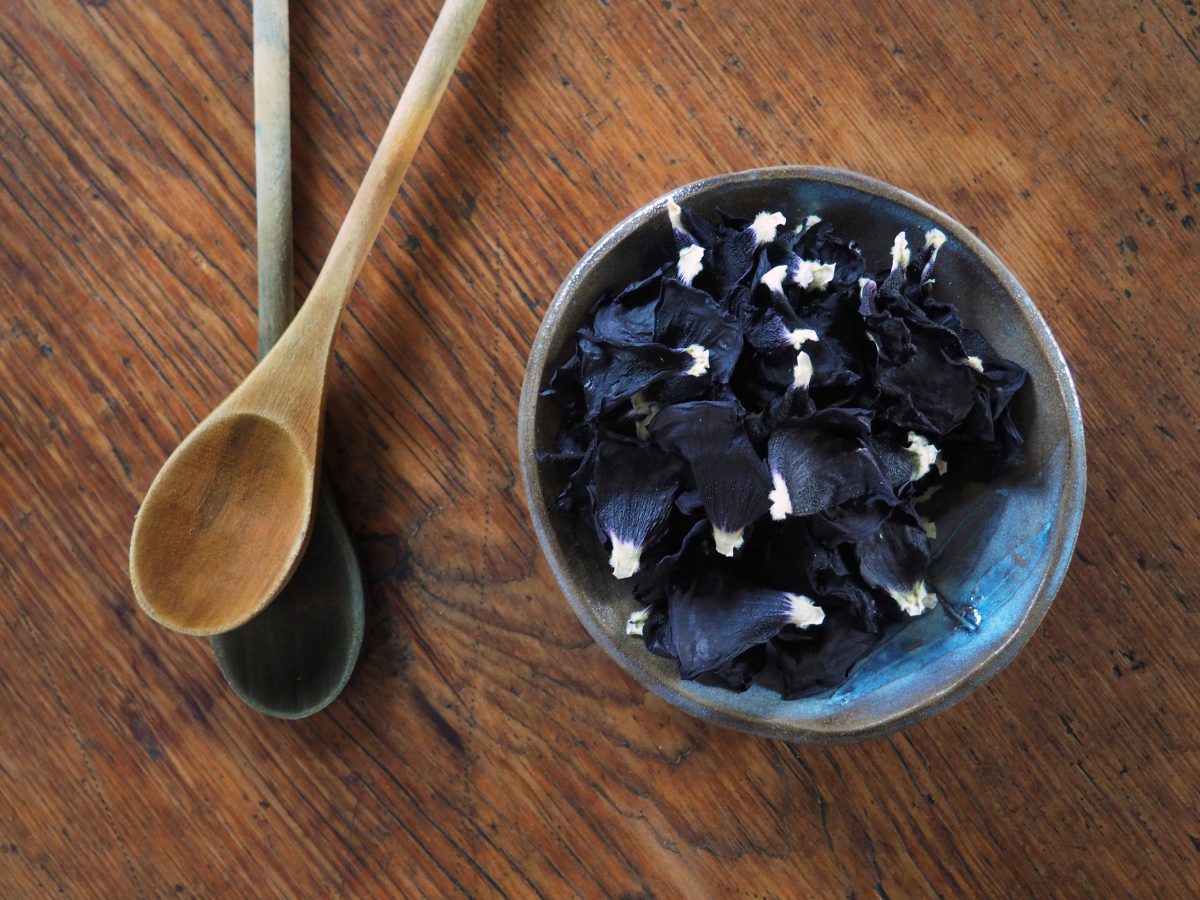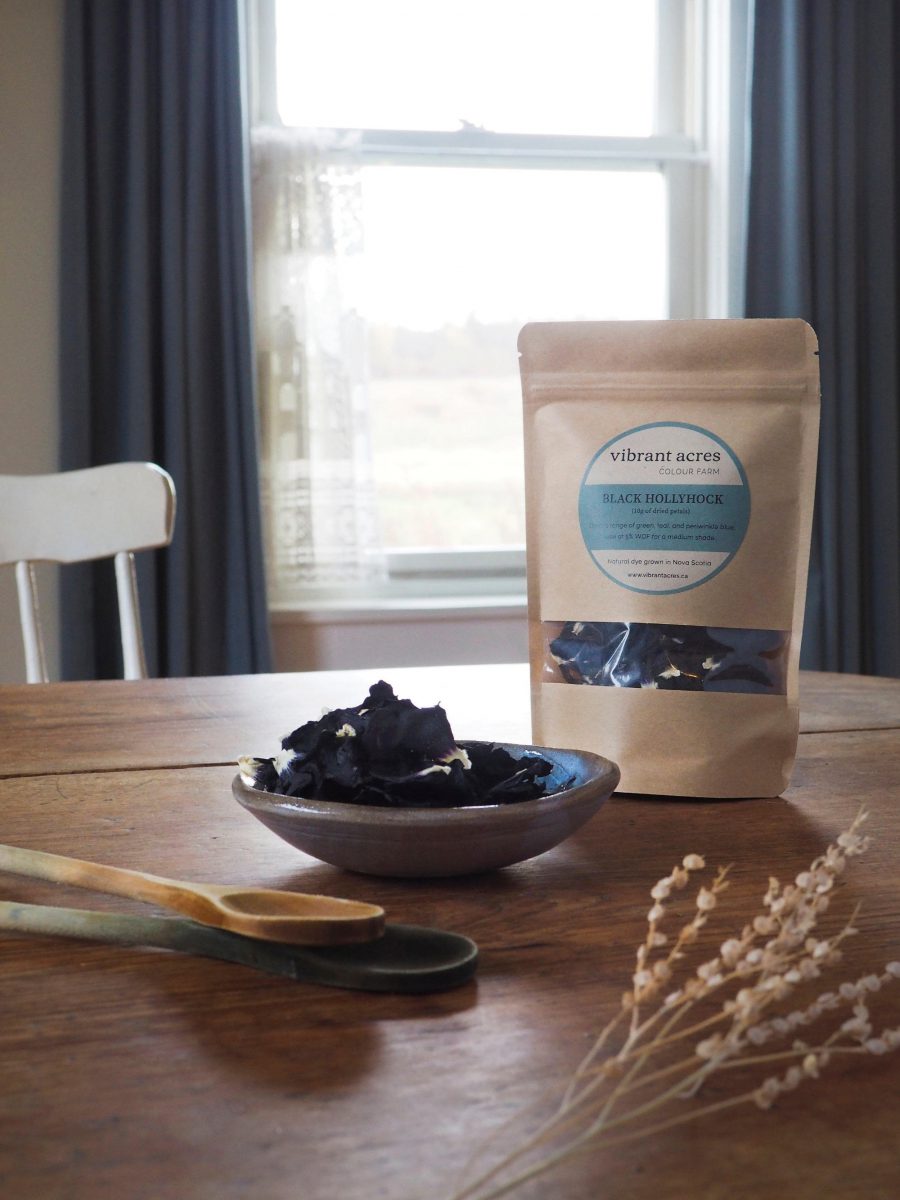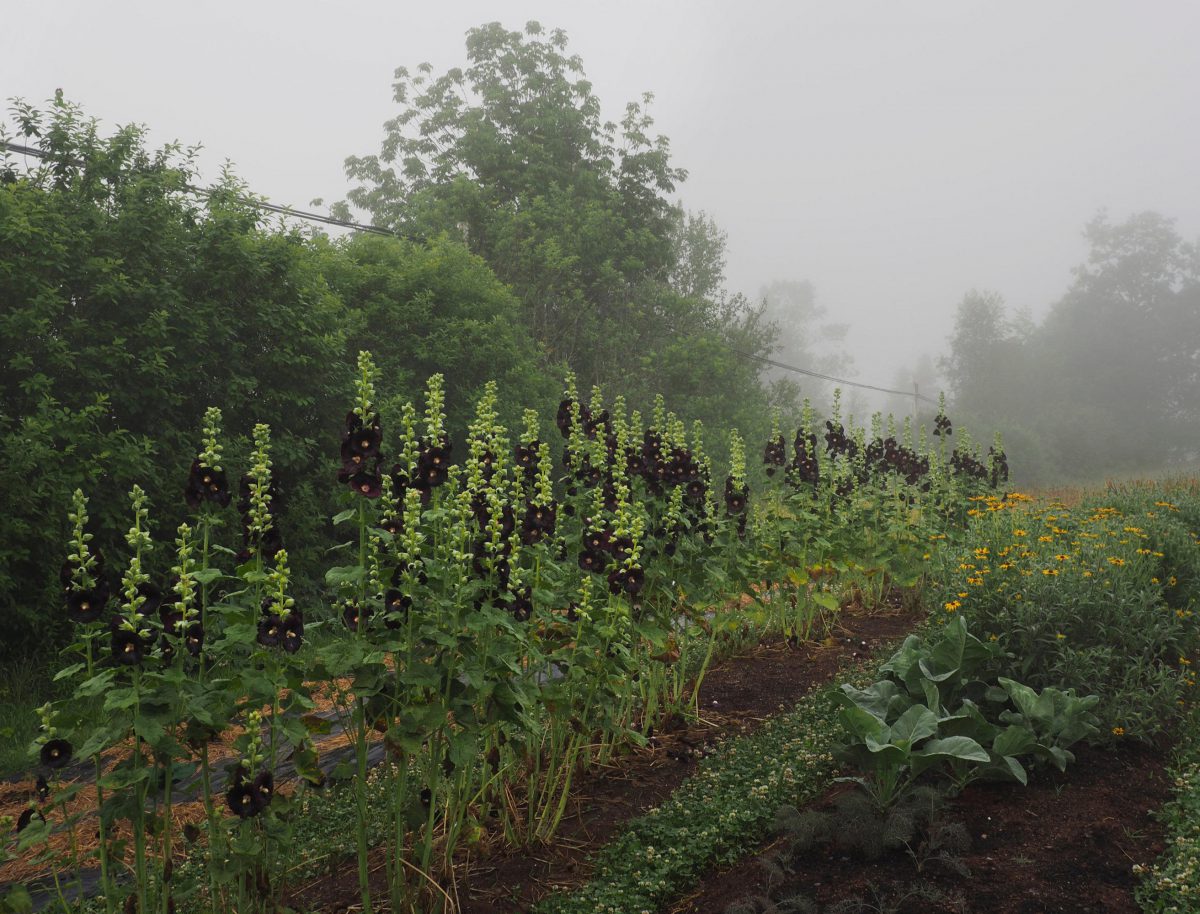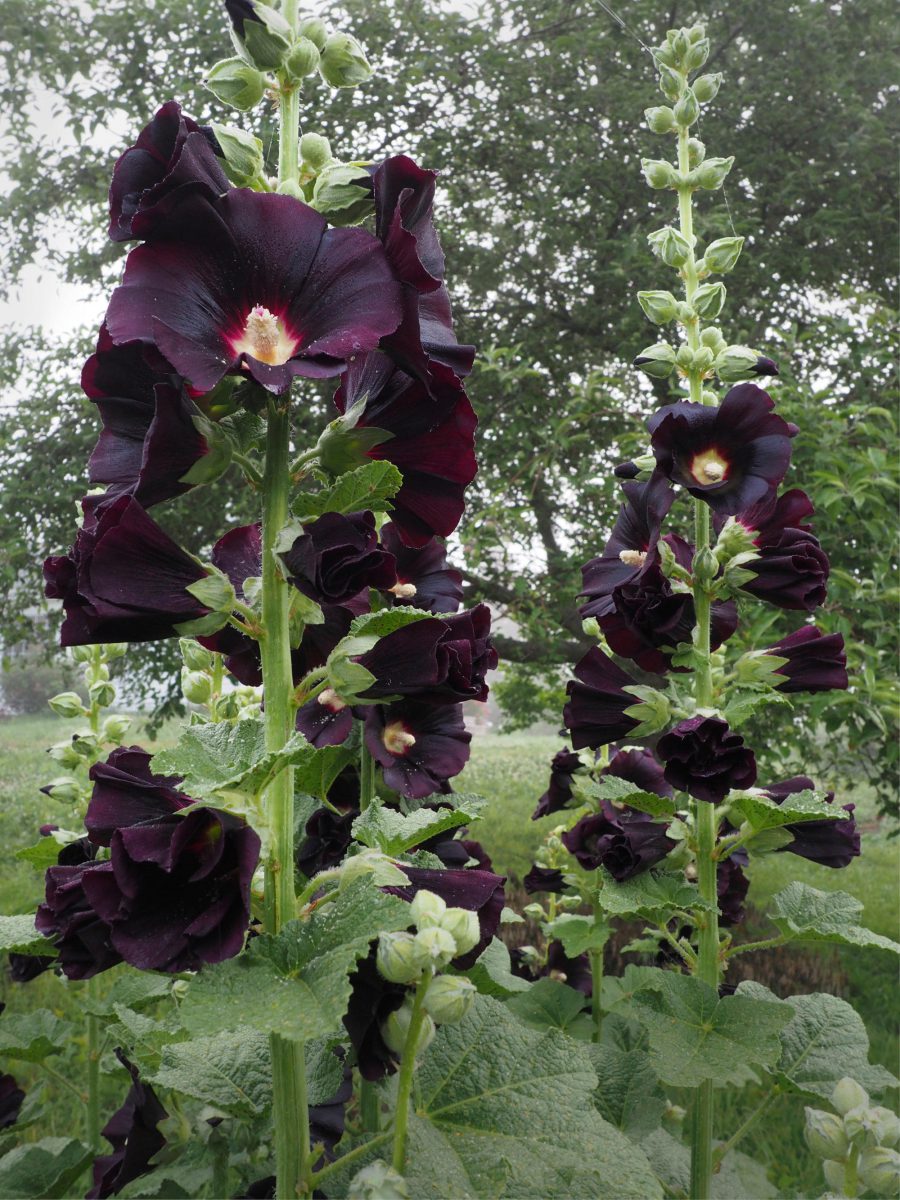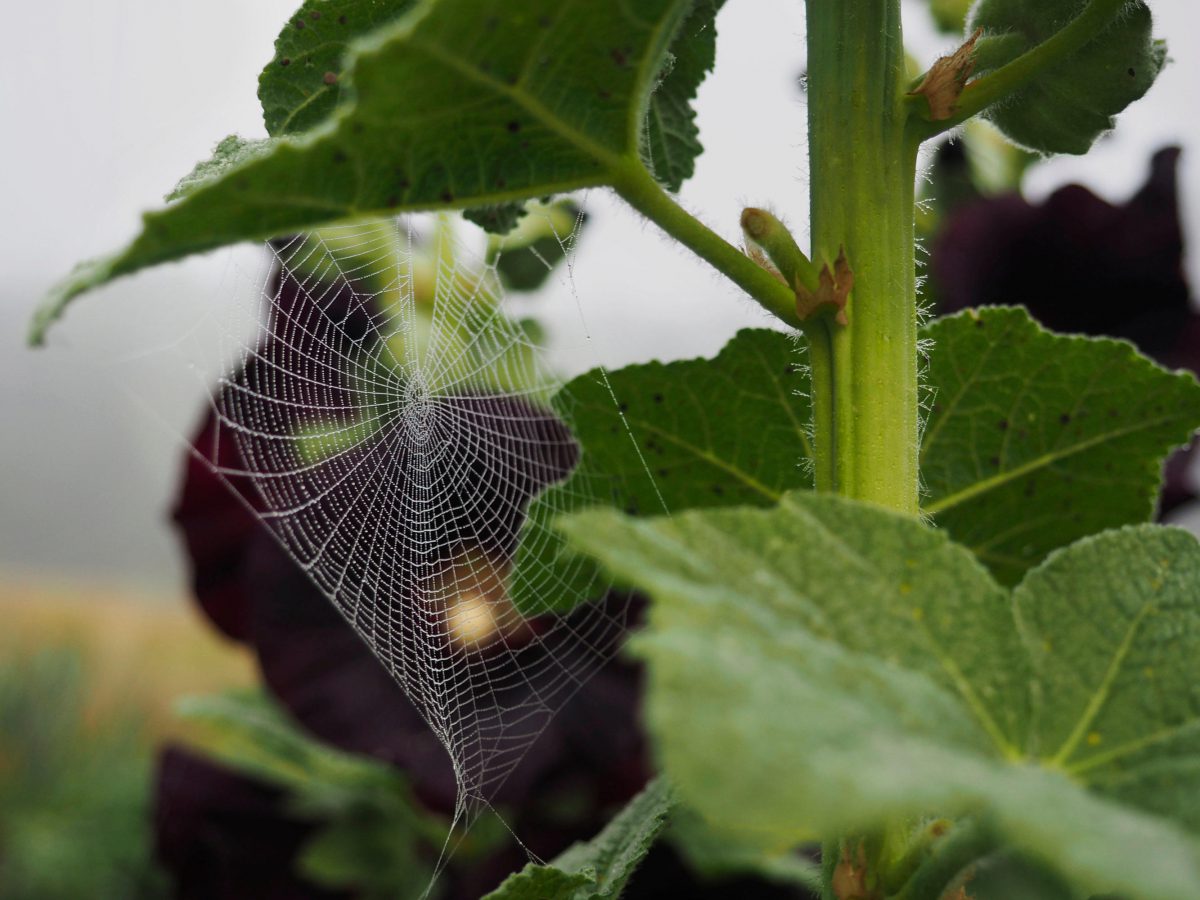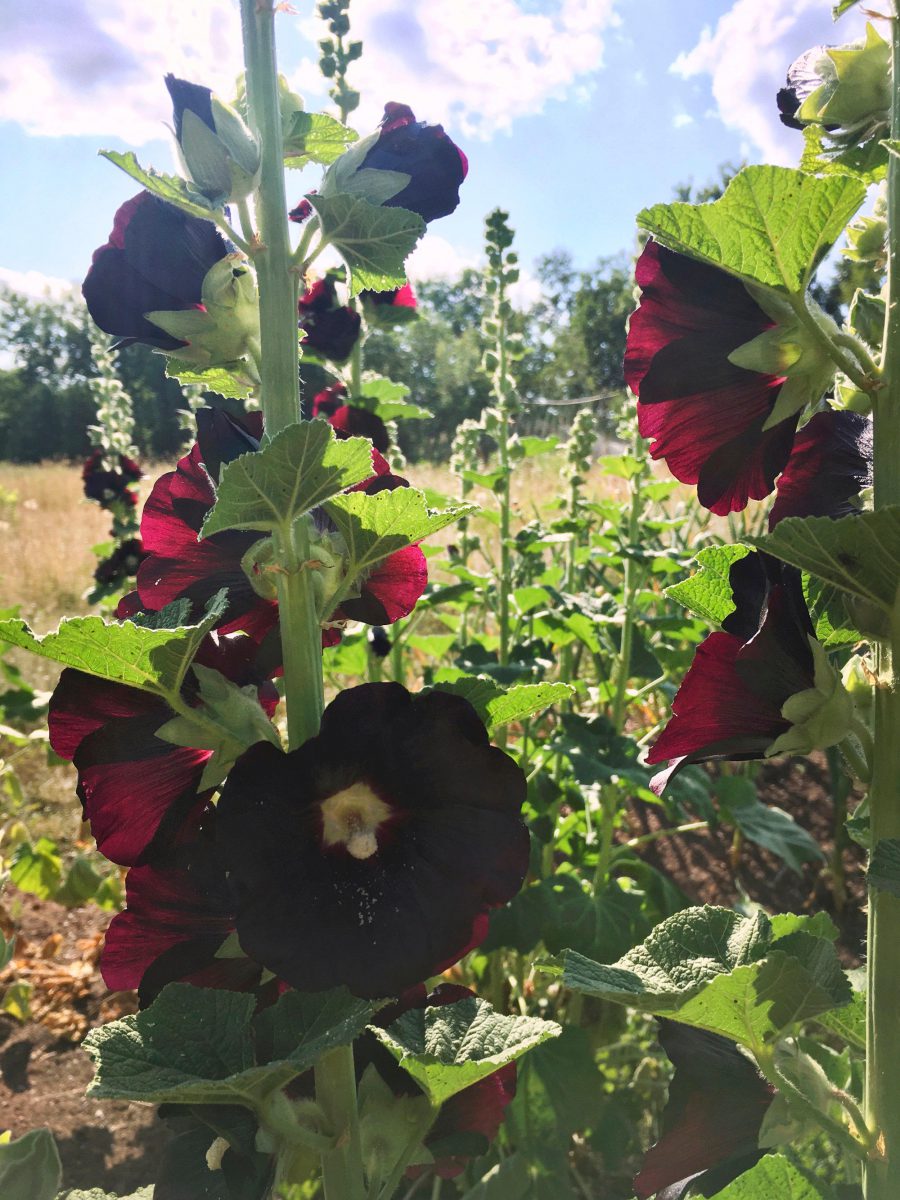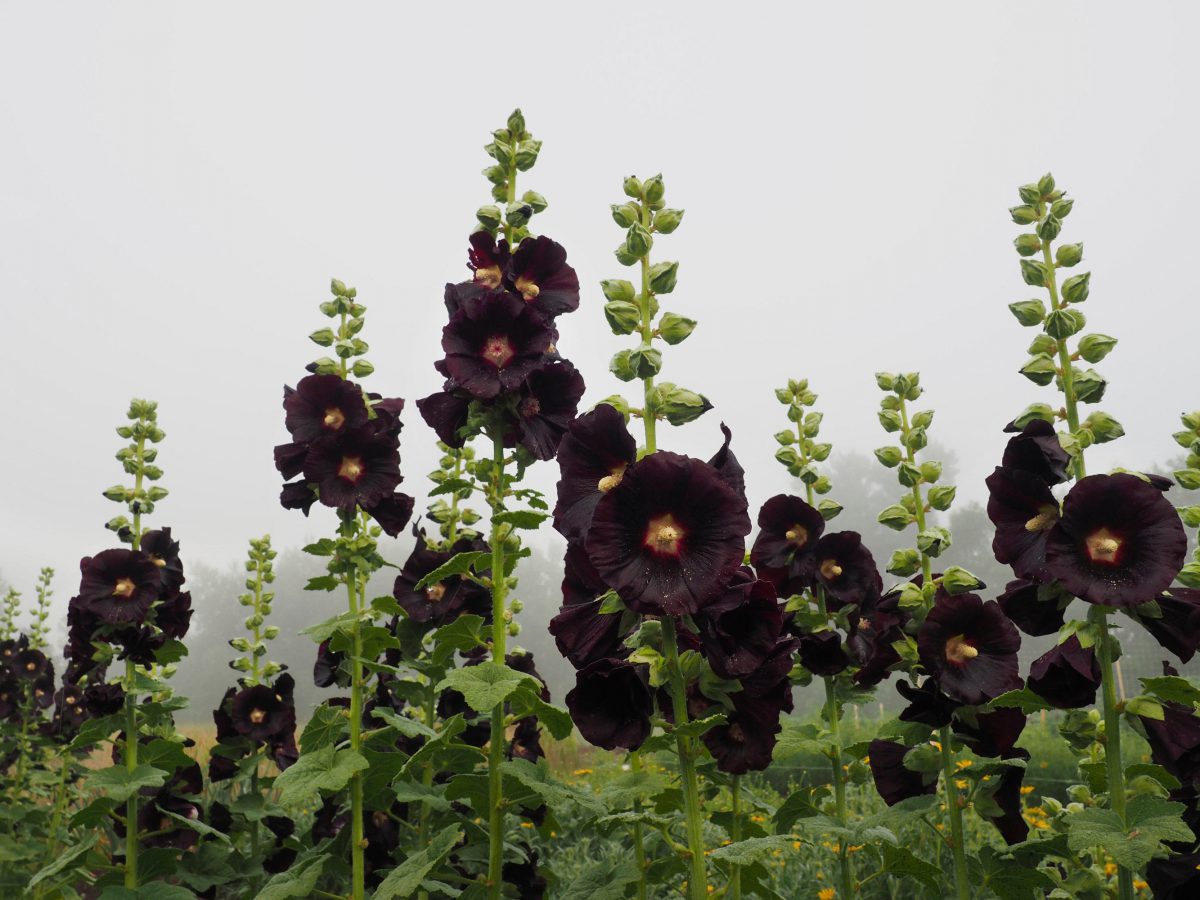Alcea rosea ‘Nigra’
Black Hollyhock is a stunning flower, sending up tall spikes in its second year with large dark purple, almost black trumpet-like flowers with waxy petals. The bees absolutely adore these flowers and we can hear them humming happily from several rows away. We harvest the full blooms as they open, remove the petals by hand, and dry them immediately. The dried petals are gorgeous in and of themselves! Black Hollyhock is a very concentrated dye source and little dye material is needed to create a rich satisfying shade of green or blue.
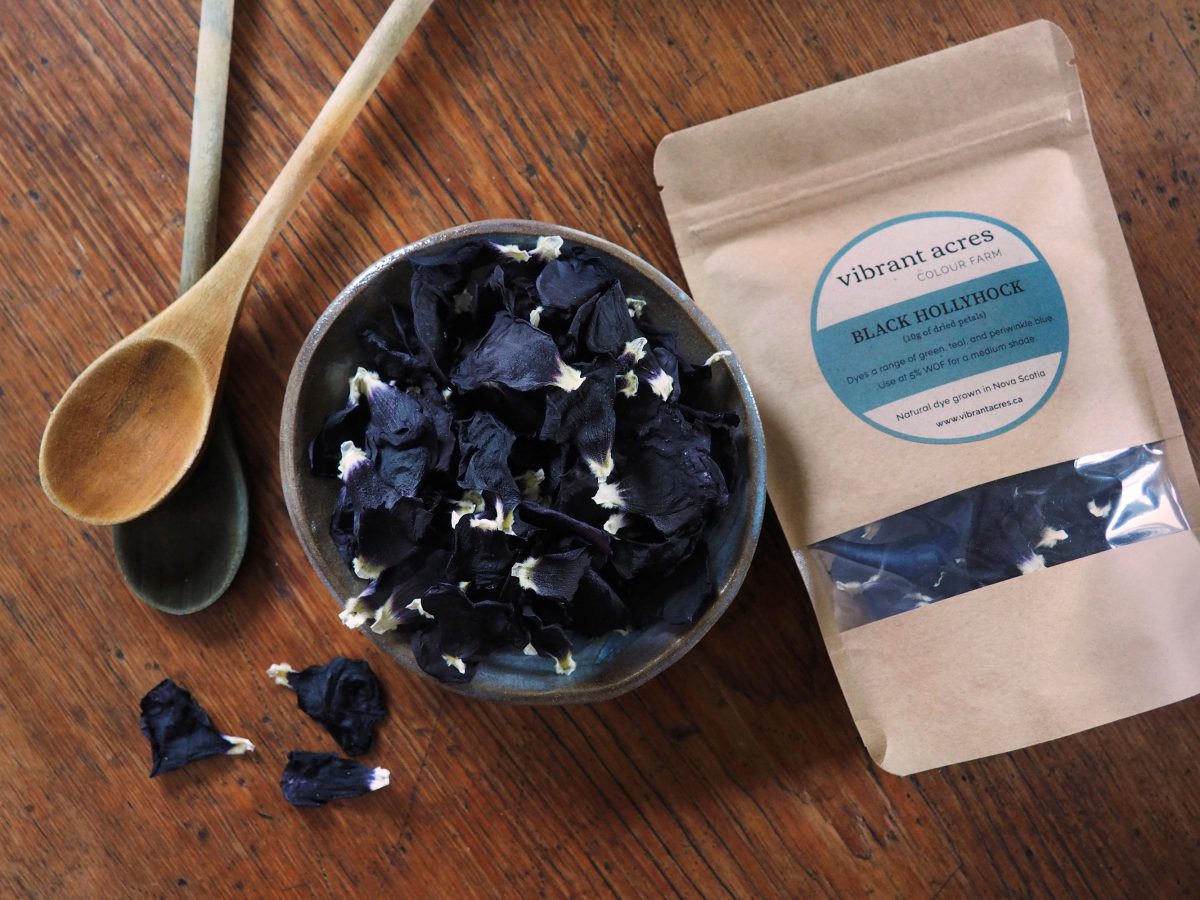
Key Dye Colours: Green, teal, periwinkle blue
Dye Process: Colour is extracted by bringing to a gentle simmer until the water turns a deep purple and the petals appear greyish in colour.
Weight of Fibre (WOF): Use at 5% for a rich medium shade. For a darker colour, use more; for a lighter colour, use less. A small bag will dye ~200g of fibre and a large bag will dye ~600g of fibre. A typical wool skein is 100g.
Key Modifiers: Little is known about this natural dye aside from it being a major Turkish export in the 1800s. We have found that it is sometimes capable of producing a green or teal and other times a bright periwinkle blue. If you figure out how to reliably get blue, we’d love to hear how you did it!
Washfastness: Moderate–Good. This colour will eventually fade to grey with repeated washing.
Lightfastness: Moderate–Good. This colour will eventually fade to grey when exposed to direct sunlight, but it will maintain its depth and value.
Overall Colourfastness: Moderate to Good.
Black Hollyhock allows you to achieve rich complex blues, greens, and teals that would otherwise require the more involved process of creating an indigo vat. While the colourfastness is not optimal, the ease of use and uniqueness of colour make it a joy to dye with for personal projects.
Natural colour grown with care
This natural plant dye was grown with care on our small farm in Nova Scotia’s Annapolis Valley. All of our dye plant material is dried on site immediately after harvest to preserve quality and maximum vibrancy of colour.
Natural dyes can only be used on natural fibres (cotton, linen, wool, bamboo, hemp, silk). For best results, natural fibres should be pre-prepared using a mordant or tannin before dyeing. Natural dyes and mordants are available in our online store.
Natural dyes create unique living colours that will evolve and wear over time as they are washed, worn, and loved creating colours and garments that are alive, telling the story of their use. While they are not as consistently repeatable or as durable as many synthetic dyes, they are far more environmentally friendly and, in our opinion, absolutely unmatched in magic and beauty. If you are new to natural dyes, we have a free guide to getting started with natural dyes.
